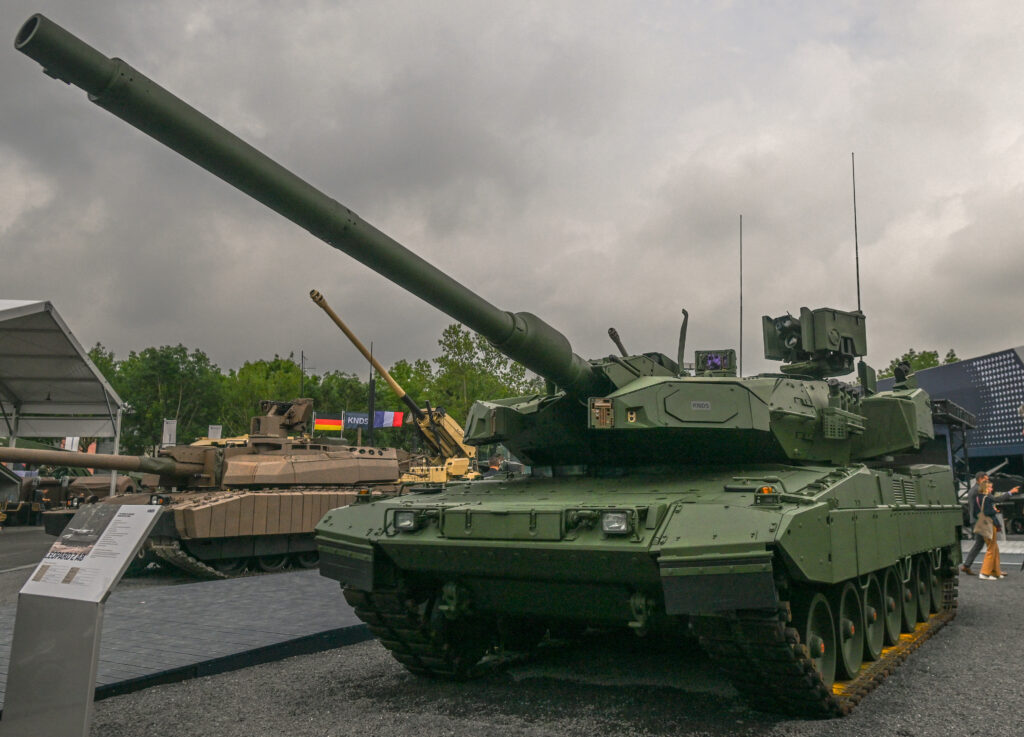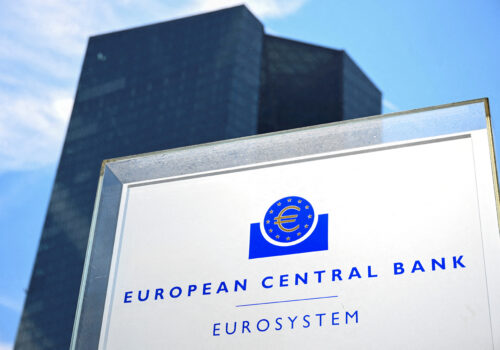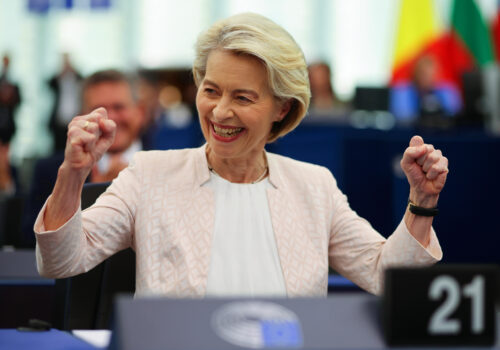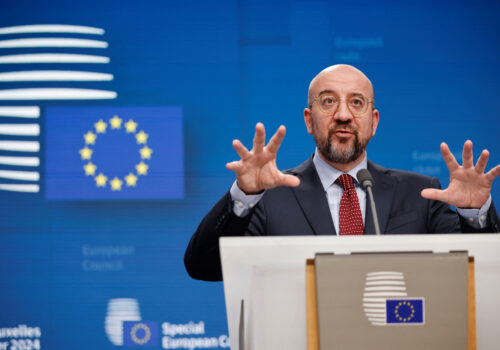In February, European Commission President Ursula von der Leyen pledged that her next cabinet will include a dedicated commissioner for defense. European Union (EU) member states are currently nominating their representatives. In September, these nominees will undergo questioning, and by November 1, the full Commission will be approved, with all twenty-seven members of the College of Commissioners officially appointed. Among them, a new figure will emerge to oversee security. But will this new appointment be a game-changer for European defense, as some optimists suggest? Or will the defense commissioner merely be a clerk managing procurement across the EU?
In the complex and often opaque world of EU governance, not all European Commission portfolios carry the same weight. Some hold significant sway over the direction of the bloc while others carry more limited influence. If the new commissioner can generate consensus among member states and is given sufficient tools, then the creation of this new role could prove to be an important step toward developing an EU defense strategy that is better equipped to deal with the security challenges facing the continent.
Evolving EU defense capabilities
Von der Leyen’s announcement of a defense commissioner follows several years in which the EU’s defense capabilities have undergone a significant evolution, driven by a desire to ensure the security and strategic autonomy of the region. Global military spending is on the rise, with EU member states increasing their defense expenditures by 20 percent in 2023, reaching a total of $311.2 billion. The EU has responded by stepping up its own defense investments, marking a departure from previous norms where such involvement was considered taboo.
This shift is also evident in the specific funds allocated to member states. The European Defence Fund, introduced in the 2021-2027 budget cycle, earmarked nearly eight billion euros (approximately $8.8 billion) for the research and development of military technologies. Previously, the focus was primarily on coordinating small and medium-sized enterprises through the European Network of Defense–related Regions, which aimed to create dual-use clusters within the EU. However, this initiative lacked sufficient financing and did not achieve significant success.
Additionally, the 2023 Act in Support of Ammunition Production allocated five hundred million euros (approximately $552 million) to boost ammunition production, while the European Defence Industry Reinforcement through Common Procurement Act set aside more than three hundred million euros (about $342 million) for joint arms procurement.
In part, the European Commission has sought to reduce the EU’s reliance on non-EU arms. Between Russia’s full-scale invasion of Ukraine and June 2023, 78 percent of member states’ procurement spending went toward defense acquisitions from outside the EU, mostly the United States. In accordance with the European Defence Industrial Strategy, the Commission aims for EU member states to allocate 50 percent of their procurement budgets to EU-made equipment by 2030, with an increase to 60 percent by 2035.
The new commissioner for defense and security
The creation of a new commissioner for defense and security within the EU signals a significant shift. The commissioner will likely oversee the Directorate-General for Defence Industry and Space, which was established in 2019. While the EU does not have its own standing army, it can provide funding and coordinate member states’ efforts. Unlike a traditional defense minister, this role will focus on enhancing coordination and procurement across the EU’s defense industry, addressing the longstanding fragmentation that has hampered Europe’s ability to respond effectively to emerging security threats.
While the high representative for foreign affairs and security policy will continue to steer the EU’s overall military strategy through the Strategic Compass, the new commissioner will likely aim to complement these efforts by focusing on defense industry integration and capacity-building. As a result, the Internal Market portfolio will lose one of its crucial elements.
A significant question mark looms over the future of the European Defence Agency (EDA), which is currently supervised by the high representative for foreign affairs and security policy. Until now, the EDA has played a crucial role in coordinating EU military cooperation, particularly through the Permanent Structured Cooperation framework. If the EDA does not fall within the new commissioner’s purview, the scope of their powers will be considerably limited.
Looking ahead, the European Defence Investment Plan (EDIP) has been proposed as a new framework to further strengthen EU defense capabilities until the end of the current budget cycle in 2027, with a budget of 1.5 billion euros (approximately $1.65 billion). Unfortunately, the funding for this plan has been modest.
Challenges ahead
The most pressing challenge for the new defense commissioner will be securing adequate funding. While Internal Market Commissioner Thierry Breton has suggested allocating one hundred billion euros for an EU defense fund, the reality is far more complicated. Reaching consensus among all EU member states to increase the budget before 2027 seems improbable. Opposition from countries such as Hungary, which has resisted deeper EU integration, will undoubtedly be a significant obstacle. Although some member states, particularly France and Estonia, have advocated for more common debt as a potential solution, this idea has struggled to gain sufficient support across the bloc.
For an industrial policy to succeed, the EU needs more than just regulation; it requires robust financial incentives. The current budget allocations may be too limited to foster meaningful cooperation among member states, potentially undermining the overall strategy. Without significant financial backing, the ambitious goals of the industrial strategy may fall short.
The EU also faces a sobering reality: Among the world’s one hundred largest defense corporations, 51 percent of revenue is generated by US companies, while only 3.5 percent comes from EU-based firms. This stark imbalance underscores the significant challenge ahead for the EU as it seeks to build a defense industry that is more capable of competing with the United States’. Unlike their US counterparts, European companies did not undergo the same process of consolidation, and the market remains fragmented, further complicating the effort.
One of the key proposals under the EDIP is a set of crisis measures similar to the United States’ Defense Production Act. This toolbox could be activated by a qualified majority vote of member states rather than a unanimous vote, which is typically the case for defense issues. In a crisis, the Commission would have the authority to compel firms to pivot their production toward defense materials. Additionally, the Commission could enforce measures to ensure the free flow of military components across the EU, strengthening supply chain resilience.
However, these proposals are highly controversial. Member states have previously rejected similar powers for the Commission during negotiations over earlier defense funds, citing concerns about sovereignty and the centralization of authority in Brussels. This resistance underscores the delicate balance the defense commissioner will need to strike between advancing EU-wide defense initiatives and respecting national autonomy.
The creation of the defense commissioner’s role is undoubtedly a significant step toward breaking the EU’s longstanding reluctance to engage in security-related matters. However, it may not meet expectations in critical areas. Instead of emerging as a strategic leader in European defense, the defense commissioner risks being reduced to a procurement manager, perpetually entangled in turf wars with national defense ministers (or even other commissioners) who are reluctant to cede control over their defense policies. Additionally, smaller countries may hesitate to participate in tenders where larger nations like France or Germany are likely to dominate, potentially channeling funding toward their own munitions industries.
The role may not immediately transform the EU into a defense powerhouse, but it represents a critical first step in what will likely be a long evolution. If the defense commissioner can build consensus, effectively leverage financial incentives, and overcome resistance with the EU, this new position could lay the groundwork for a more cohesive and self-reliant European defense strategy—one that could eventually reshape the global defense landscape and strengthen Europe’s role on the world stage.
Piotr Arak is the chief economist at VeloBank Poland.
Further reading
Mon, Jul 29, 2024
The EU needs to adapt its fiscal framework to the threat of war
New Atlanticist By
Without revisions, the bloc’s fiscal rules risk preventing member states from making necessary increases in defense spending.
Thu, Jul 18, 2024
What to expect from Ursula von der Leyen’s second term
New Atlanticist By James Batchik
The European Parliament has given European Commission President Ursula von der Leyen a second term, but it will be different from her first in several important ways.
Thu, Feb 1, 2024
Experts react: The EU just approved a 50 billion euro aid package for Ukraine. How will it impact the war?
New Atlanticist By
The breakthrough follows weeks of resistance from Hungary and comes as the two-year mark of Russia’s full-scale invasion of Ukraine draws near.
Image: VILLEPINTE, FRANCE - JUNE 21: Leclerc XLR, a fourth-generation French main battle tank (MBT) developed and manufactured by the Nexter division of KMW+Nexter Defense Systems (KNDS), on display at the Eurosatory Defense and Security expo, on June 21, 2024, in Paris-Nord Villepinte exhibition center, Seine-Saint-Denis, France. Eurosatory, held biennially in Paris-Nord Villepinte Exhibition Centre, is the largest international exhibition for the land and air-land defense and security industry. Photo by Artur Widak/NurPhoto.



